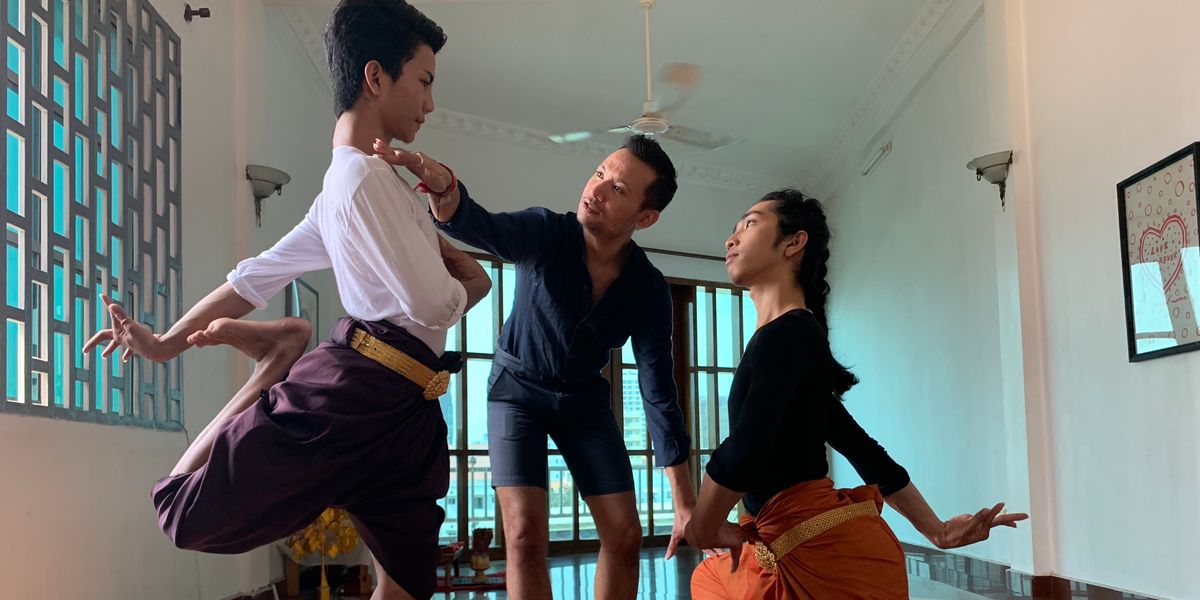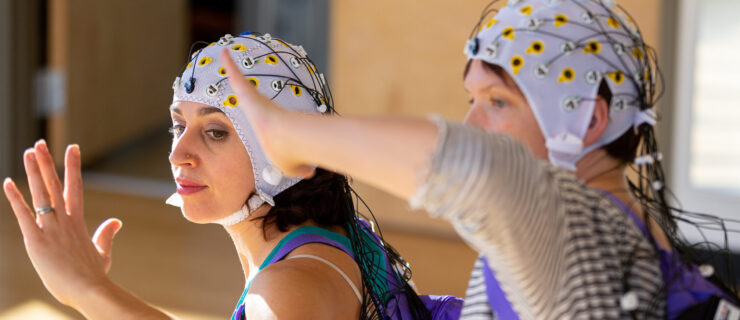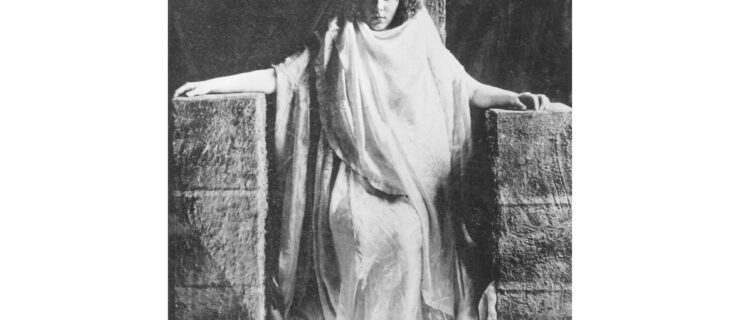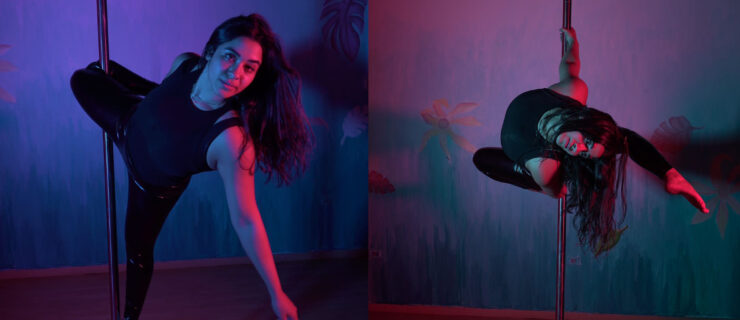Why Prumsodun Ok Founded Cambodia's First Gay Dance Company in His Living Room
How do you respectfully preserve a dance tradition that is more than 1,000 years old while recontextualizing it for 21st-century audiences? Perhaps no one has done it so well in recent memory as Prumsodun Ok, the founder of Prumsodun Ok & NATYARASA, Cambodia’s first gay dance company.
Ok, a Long Beach, California, native whose parents were Cambodian refugees, not only restages traditional works of Khmer classical dance but also uses the stories and vocabulary of the ancient style to create new works that center LGBTQ+ characters and perspectives. In the process, he’s helped to revitalize and bring global attention to an art form that was nearly wiped out with the vast majority of its practitioners in the Khmer Rouge genocide of the late 1970s. We caught up with him via email.
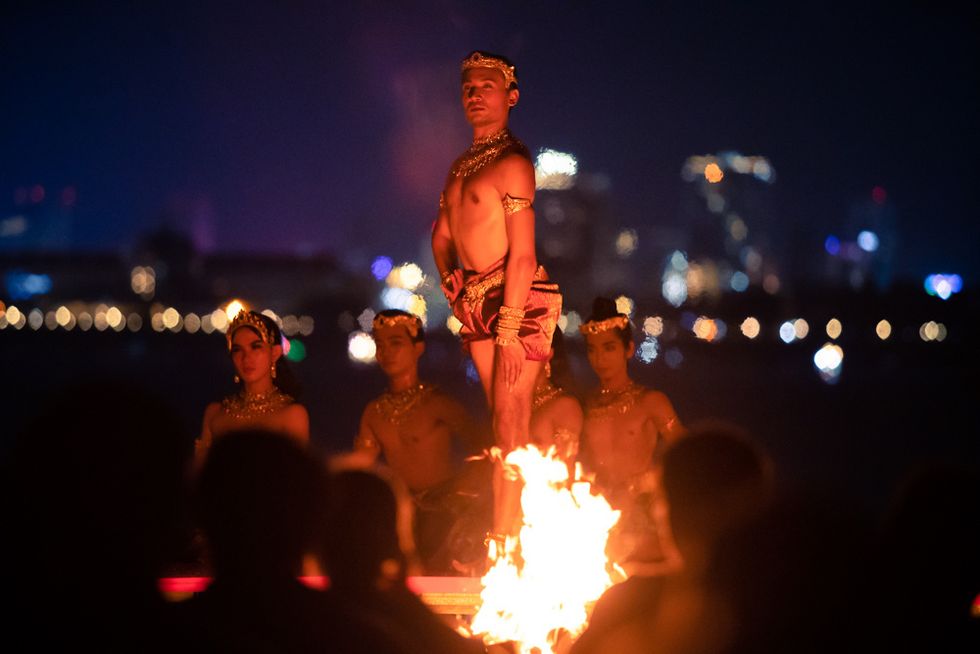 Nobuyuki Arai, Courtesy Ok
Nobuyuki Arai, Courtesy Ok
How did you begin studying Khmer dance?
When I was 4 years old, my father recorded young dancers at the local temple on a VHS tape. The dancers had bad technique and wore cheap costumes, replaced flower tassels for tinsel.
Nonetheless, I was captivated. I imitated their movements while wearing my sister’s red dress, adding a twirl here and there. Now that I look back, I cannot help but be in awe of the spirit of the dance. Even through all the cracks and fractures, the losses and lacks—I still recognized its beauty. That is power. And it is something I contemplate and strive to capture as I teach, create and direct.
I didn’t receive proper training until I was 16. By that time, I had already pushed dance away to hide traces of my femininity and sexuality. When I came home from school one day, I learned that my two younger sisters had started Khmer classical dance lessons. I followed them to class and the sound of the music, the young bodies in unison, the dazzling costumes—the love all came rushing back. I was at every subsequent practice from then on, sitting and observing from the sidelines for one whole year before I had the bravery to ask the teacher to study. That teacher was Sophiline Cheam Shapiro, who was just beginning to emerge as an independent choreographer and pioneer of contemporary Khmer dance.
For our readers who might not be familiar, what is Khmer classical dance?
Khmer classical dance is more than 1,000 years old. It encapsulates animist, Hindu and Buddhist philosophies, and was developed as a prayer in movement for rain and fertility. In ancient days, dancers were offered to temples as living bridges between heaven and earth: Their dancing bodies carried the wishes of the people up to the heavens, and served as vessels for the ancestors, territorial spirits and gods.
The dance form is often described as “meditative,” and can be identified by its highly stylized hand gestures, grounded fluidity and curvilinear aesthetic. These elements create the impression of a serpent, which in turn conjures the image of a river cutting across the earth. To invoke the serpent then, was to invoke the flow of life-giving waters. And, in doing so, ensure the prosperity and well-being of the people and the land.
Despite centuries of war, and despite the devastations of the Khmer Rouge genocide which brought the deaths of 90 percent of Khmer dance artists, this richness of meaning and purpose has endured and continues to grow. Dance is so integral to Khmer culture that we claim descent from an apsara, or celestial dancer, named Mera. Well, in our “solar lineage” anyways. Our older “lunar lineage” claims descent from a naga, or serpent princess, that was later given the Sanskrit name Soma.
The practice and performance of Khmer classical dance is an invocation to our divine dancer–serpent mer—our “mother, chief, boss, master”—from which Mera takes her name, and bears direct relationship to the word Khmer itself. Khmer classical dance is therefore an expression of independence, a ritual technology meant to inspire spiritual transcendence and social vitality, and, with Cambodia’s modern history in mind, a protest against war, violence and trauma.
Why did you choose to start your company in Cambodia?
I didn’t intend to form Cambodia’s first gay dance company. It was perhaps part coincidence, part fate.
In 2015, I started to feel trapped. I felt that I was getting older, and that my time as a dancer was limited. This anxiousness was spurred further by my frustration with teaching in an American context. Although my students at the Khmer Arts Academy in Long Beach had the potential to become world-class dancers, it was a harsh awakening that I would be lucky to have even one student give their life and being to the service of the art.
First off, there is a socioeconomic hurdle. Eking out life as an artist, practicing a relatively esoteric art form such as Khmer classical dance, means living at the margins of society, standing face-to-face with poverty. My students could not imagine themselves as artists because they—and their families—could not imagine surviving as artists. Even my own mother once said to me, “If you walk out that door to dance class, don’t call me your mother anymore.”
Secondly, there is the double-edged sword of identity. Although our names and labels can give us visibility, collective voice and organized power, they can also build walls, sever connections and create distances. In short, the fortresses we build can also be our own prisons. When asking my students why they love Khmer classical dance, the common answer was because it is their “culture” (read: ethnic identity). Yes, it is. But I wanted to go further, to be amongst those who valued dance as art, as a personal and universal language to explore, question and shape the world.
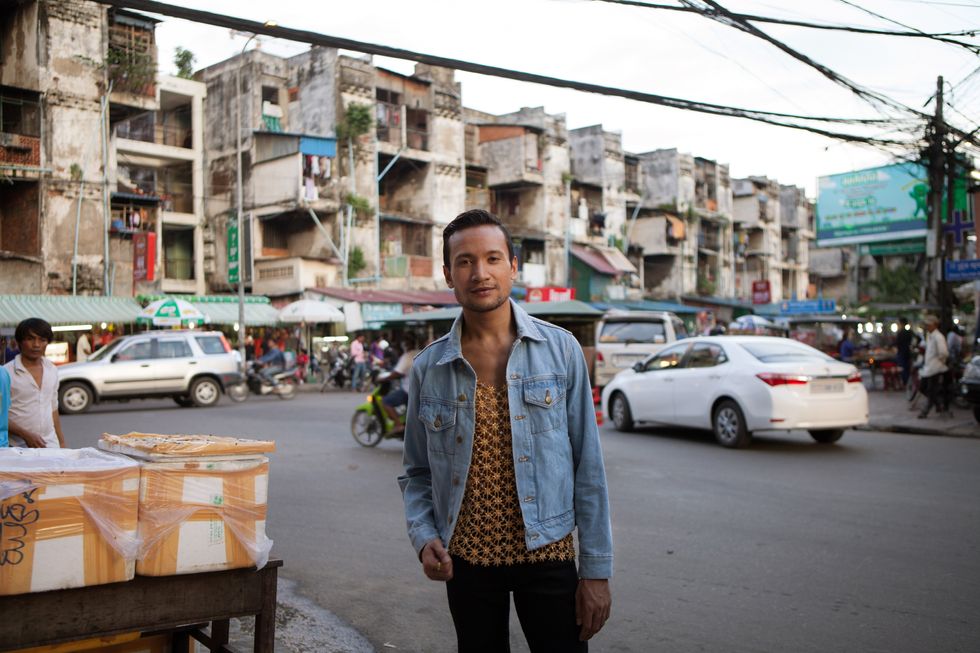 Lim Sokchanlina, Courtesy Ok
Lim Sokchanlina, Courtesy Ok
My unease forced me to ask an important question: Would 6-year-old me be proud of my life right now? The answer was no. I felt a need for radical change. I traveled to Brazil, Chile and Mexico in search of a new home, eventually deciding on Mexico.
Shortly after I resigned from my teaching position, however, I received a MAP Grant to develop a project called Beloved. Inspired by a tantric ceremony recorded in the 13th century, in which the Khmer king would sexually unite with a naga every night to ensure prosperity, Beloved was meant to cast a history of ritual lovemaking into the dancing bodies of gay men. My conceptual goal was to use bodies often deemed illegal and contrary to nature to embody a love so powerful that it makes the rain fall. So, I put Mexico on hold and flew to Cambodia.
Everywhere I turned, I was confronted with so much poverty and sadness. And to love the people, love the culture, love the country—and feel like you can’t do anything to help—this was heartbreaking.
About a month and a half into teaching, however, I sat looking at the young men with a quiet surprise. They started to look like a real company—Cambodia’s first gay dance company just formed in my living room! I understood that if I was to serve this vulnerable artistic tradition, and make the biggest impact, I had to do it from Cambodia.
You’re of Cambodian descent, but you grew up in the U.S. Did you have to navigate being something of an “outsider” while also being a trailblazer in this traditional art form?
There is a trope in American literature and culture of the minority torn between two cultures. A supposedly fast-paced American life is incompatible with the conservative values of the motherland. Somehow America always gets to play the force of liberation and freedom in this oversimplified scenario, with the places our parents come from being exoticized and flattened as backward. As a young person, I was trained to think this way.
A big shift occurred when I recognized myself as a center. I am a being with the power to draw diverse forces together, am in, of and between many different cultures, communities, histories and approaches. Instead of trying to place myself in a spectrum, I contained the spectrum inside me. And, suddenly, my struggles became a richness.
I believe we are all situated as center.
The benefit of my centeredness is having the ability to act from the inside and the outside. I exchange with my communities using the languages, symbols and images that matter to them most, while surprising them, coloring and infusing their world with new ideas and possibilities.
In fact, if we turn to history, there are many examples of Khmers who have come from the “outside” to usher in a new era of prosperity in Cambodia. King Jayavarman VII was in residence at Champa before pushing the boundaries of the Khmer empire to its heights. His predecessor, King Jayavarman II, was in residence at Java before founding this same empire in 802 CE. Even before them, going into the mytho-historical realm, the naga princess Soma married a Brahmin from India before founding Cambodia.
 Ok works with dancers Seourn Chamreoun and Dy Puthik.
Ok works with dancers Seourn Chamreoun and Dy Puthik.
Morn Sopharoth, Courtesy Ok
What is the attitude toward theLGBTQ+ community in Cambodia, in your experience?
People are often surprised to hear that I feel safer as a gay man in Cambodia than I do in the United States. Maybe it’s because of Buddhism, or maybe it’s because a traditional approach to sexuality can still be felt (one not so rigidly labeled). But I feel an exciting sense of openness and acceptance.
That said, I recognize and value every person’s unique experiences. And, as someone not living under my family’s roof, making my own money, coming from America, I have a certain set of privileges that make life easier.
I have read stories of people being forced to get married to someone of the opposite sex after coming out. I have heard of parents taking their children to monks to purify the gay away. I have heard of people being disowned, and of others facing discrimination in the job market. I have also seen countless living caricatures of gay people, often effeminate and crude, in television programs.
Beyond this, however, I have also heard of parents joking with their LGBTQ children about sexuality. I have seen gay marriages portrayed in music videos and via strangers’ posts on Facebook. My company was just featured on a Thai television show alongside a lesbian couple who have been together for years in the countryside. And prominent politicians have come forth in support of LGBTQ people.
I imagine there are some unique challenges to creating the work that you do.
I am battling layered forces of erasure.
First there is the Khmer Rouge genocide, which killed off one third of Cambodia’s population. Khmer people nearly lost all our creators and leaders, our families were fractured, fear and mistrust planted into our community. The effects of this violence are generational, as evidenced by how nearly half of Khmer American youth surveyed displayed symptoms of depression. Secondly, there is the AIDS epidemic that took the lives of so many gay men, and the ongoing global attempt to erase LGBTQ people from history and contemporary society.
Prumsodun Ok & NATYARASA therefore has two missions: to give new life to a tradition that remains vulnerable after a legacy of war and destruction, and to elevate the quality of life and expression for LGBTQ people all over the world. By training young gay men in the art of Khmer classical dance, by restaging traditional works and creating those that reflect my own experience, I am offering new bodies, new ideas and new ways of being valued to the tradition. On the other hand, I am giving an often misunderstood and stigmatized community a chance to be celebrated as caretakers of heritage, as people who contribute to the growth and prosperity of society.
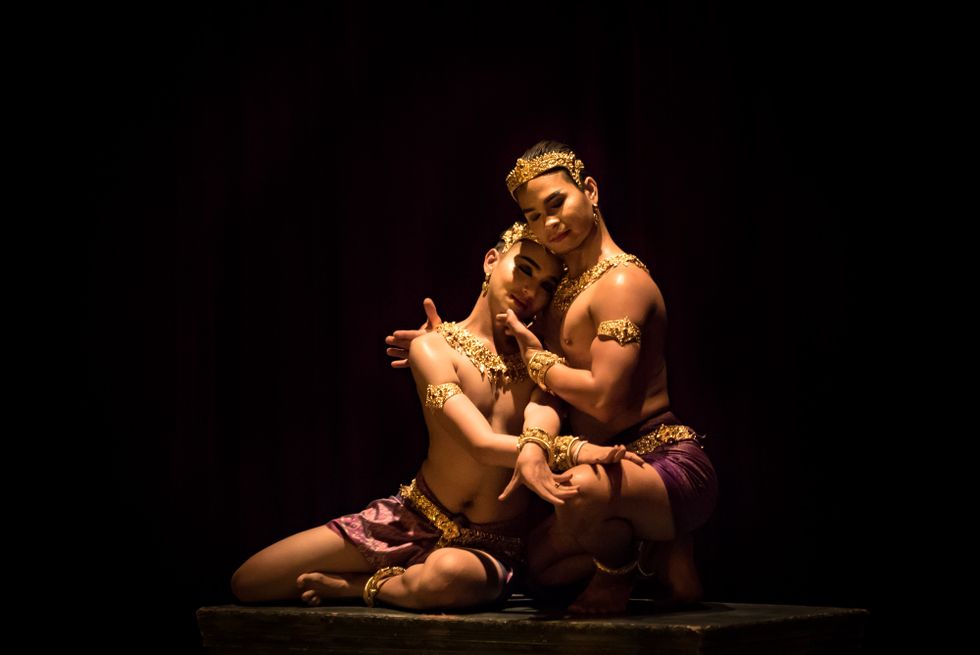
Robam Santhyea Vehea uses traditional dance, music and costuming to illustrate the love and marriage of two male gods.
Nobuyuki Arai, Courtesy Ok
How do you address LGBTQ+ issues in your work?
On the stage, knowing that Khmer dance is a mirror of heaven, I have faithfully used Khmer classical dance, music and costuming to depict the love and marriage of two male gods. The re-choreography of heaven is the re-choreography of the world itself. In the case of my PRUM X POP project, Khmer classical dance is set onto contemporary pop music from all over the world. My hope is to turn these short choreographies into dance films which set gay bodies and a fragile heritage into public spaces.
My work begins with nurturing the young men who have given their time and energy to my vision, developing their capacities as artists and leaders. I work to challenge and polish them physically, mentally and spiritually, while giving them the freedom to be who they are. I also work hard to secure a livable wage for them. Taking after Hang Thun Hak, a theater artist who once served as Cambodia’s prime minister and was killed alongside so many other artists and intellectuals, the creation of an artist, of beautiful art, begins with the creation of good people.
I do not separate the stage from life. Advocacy for change must be wholesome and multifarious if it is to be effective and lasting.
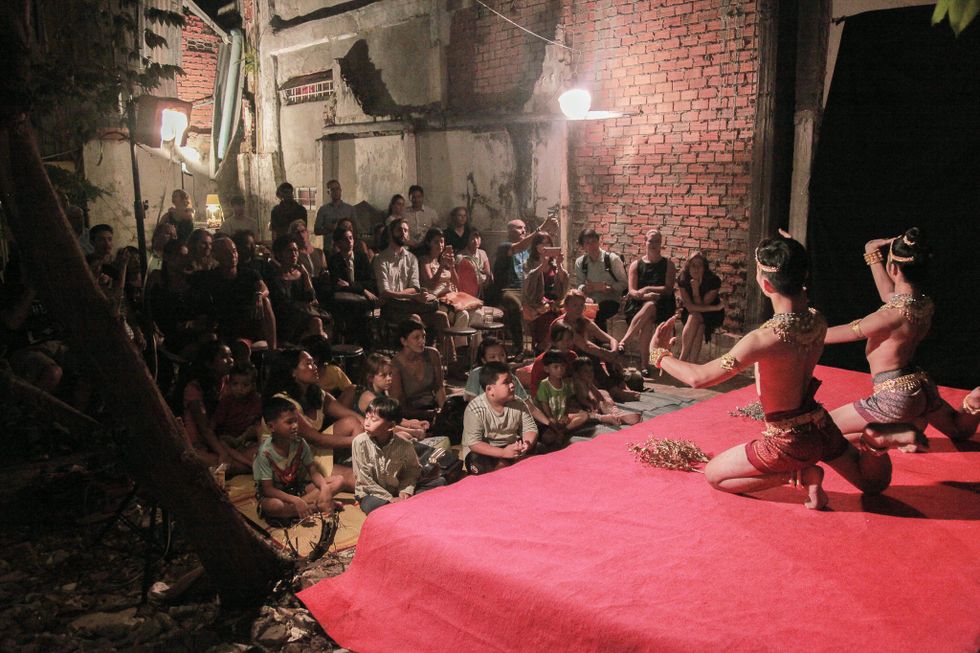 Association Anvaya, Courtesy Ok
Association Anvaya, Courtesy Ok
How have people reacted to thecompany?
We have gotten a lot of love. Our first show in Cambodia took place at the Ministry of Culture’s Department of Performing Arts in Phnom Penh. We opened the doors one hour early and the theater was completely packed in five minutes.
When I was creating and performing in the United States, the dance world felt like a closed circuit. The only people who came to see shows were other artists, who were often our friends. And, although we may have big ideas about our work, it often never goes beyond what a dear friend has described as an “art ghetto.”
Because I am working with Khmer classical dance in Cambodia—working with a national dance form valued from the top to bottom of society—I have the capacity to reach a national audience, to create impact on a national scale. Coming out and forward as Cambodia’s first gay dance company sends a message that defies many social contradictions.
As we don’t play to stereotypes or adopt mainstream gay culture (which is often just an explosive American consumerism), for some people we are not “gay” enough. And then there are others who say labeling ourselves as “gay” is limiting, while others have said that our work is bigger than “gay,” that it is universal. There have been many who have said something like, “I don’t like gay people but I appreciate them for taking care of our culture.” This is important. When we find ways to connect and value one another beyond our differences, we begin the process of change and the nurturing of peace.
So, other than some artists who feel a need to compete with us, as well as the inevitable haters who hide behind computer screens, we have gotten a lot of love, from Cambodia and beyond. There have been many who have come to our weekend shows at the Counterspace Theater, where we are the resident dance company, and have asked, “When are you coming to France?” “To New Zealand?” “To the United States?” When I’m out at gay bars young Khmers will sometimes thank me for just speaking to them. Monks have even stopped me to ask for a selfie.
It’s been a fast and inspiring three years, and I always like to think back to that first performance in Cambodia. After a postshow talk, a young person in the audience came forth and said, “I hope these new things never end.”
